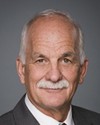Thank you, Madam Chair.
I thank the President of the Treasury Board and the other witnesses.
Before I ask my question, and I do have a question, I would just like to correct certain timelines in information that the President of the Treasury Board has provided to this committee concerning the Public Appointments Commission and the whole issue of the prospective candidate the Prime Minister had appointed, or wished to appoint, who was rejected by members of the House of Commons.
In fact, all of that took place, in terms of the appointment of Mr. Gwyn Morgan and his rejection by members of the House of Commons, prior to the conclusion of the committee before which the Federal Accountability Act came.
Before that Federal Accountability Act even left committee and was reported back to the House, the creation of a Public Appointments Commission with a clear mandate and clear composition in terms of membership and authorities was created within the committee through amendments brought by members of the opposition following the rejection of Mr. Gwyn Morgan as a suitable candidate to be a public appointments commissioner.
So we are talking about a year ago, Minister. Therefore I find it difficult, in a population of 33 million, that this government has been unable to find another suitable candidate to fill the position at the head of the Public Appointments Commission. It has had over a year, and the legislation received royal assent in December 2006.
I can describe the experience of a previous government that created a new commission. It was the Military Police Complaints Commission. The act came into effect; the day it came into effect, the chair and the other members were appointed; and the ability to receive and begin to investigate complaints under the legislation took place three months later.
So I believe there is no excuse. But whether there is or is not, I simply wish to correct the record in terms of the timeline. The government has had over a year to find another candidate.
My question, Madam Chair, is concerning the government's commitment in the 2006 budget to cut $1 billion over two years from programs and activities that it would deem no longer effective. The supplementary estimates (A) and (B) of 2006 did indeed provide information on approximately $223 million in savings, leaving, therefore, a balance of approximately $776 million to achieve the government's commitment to cut $1 billion over two years. The government stated at that time that the balance would be found in future estimates or in reductions of its expenditures. However, the main estimates for 2007-08 are silent on that balance of approximately $776 million.
First, I would like to ask the minister, has that balance been in fact cut? If it has, would he provide a detailed list of the departments that have contributed to achieving the remaining savings of approximately $776 million to reach the $1 billion mark the government set for itself?
If it has done that, has it conducted an evaluation of the effectiveness of its 2006 budgetary restraint initiative? That is, how efficient and how effective was that $223 million in savings through the cuts from programs and activities that had been deemed non-effective?
If it hasn't conducted such an evaluation, will it conduct the evaluation? If it has conducted the evaluation, will it provide this committee with the written evaluation of the effectiveness of that 2006 budgetary restraint initiative?





